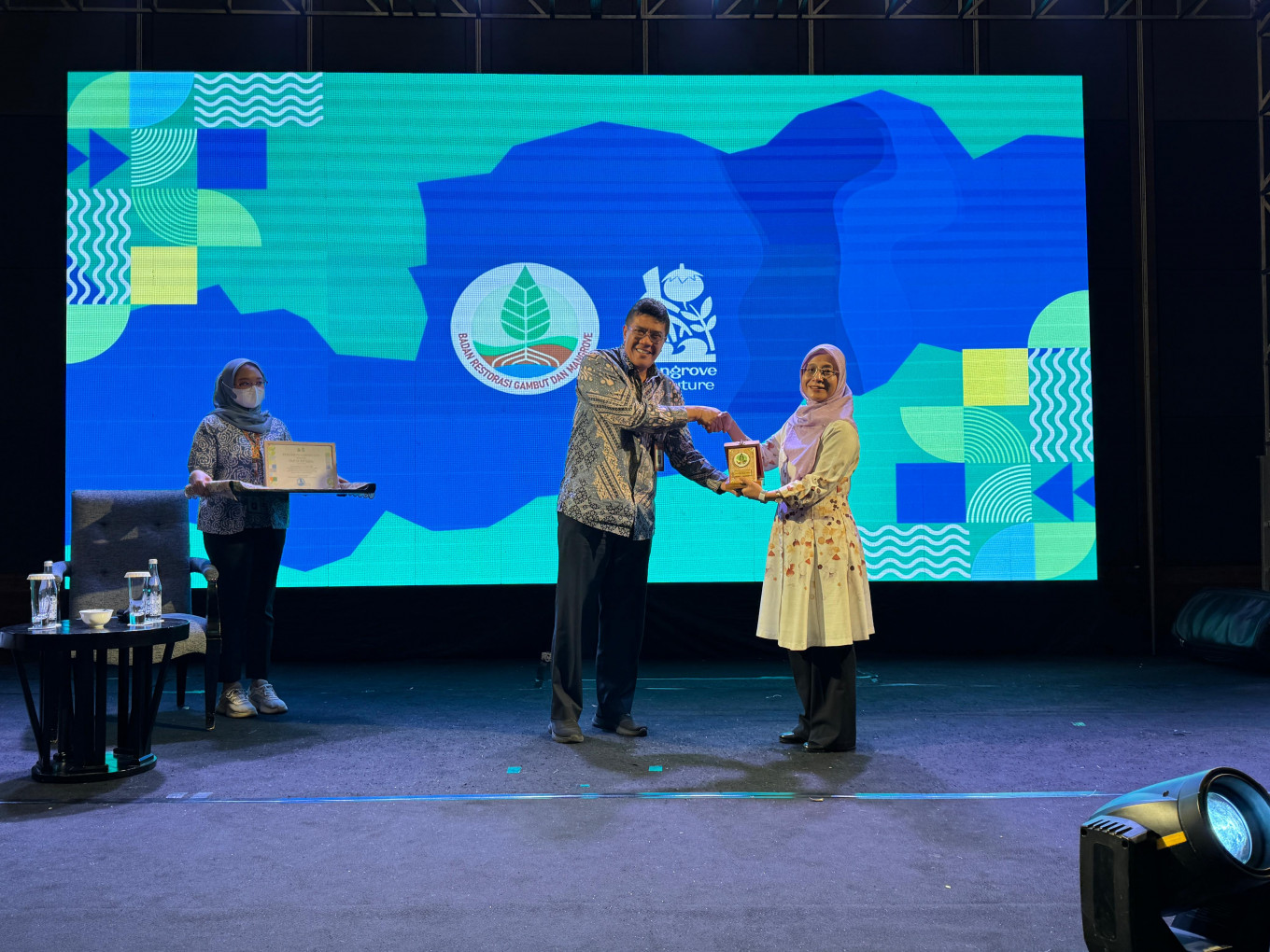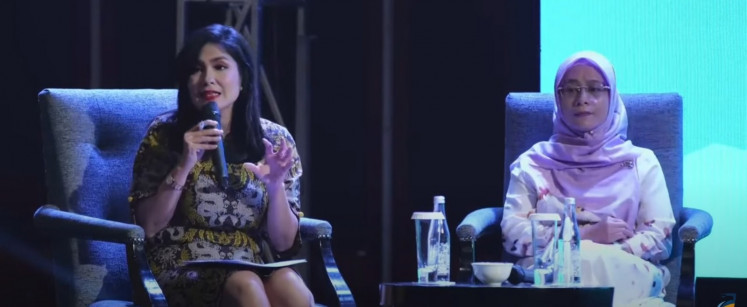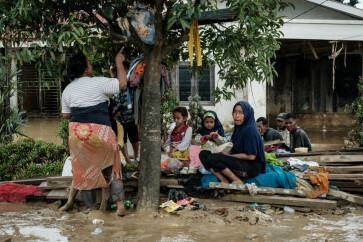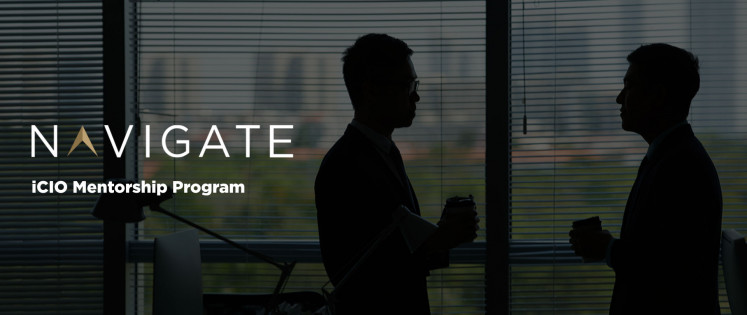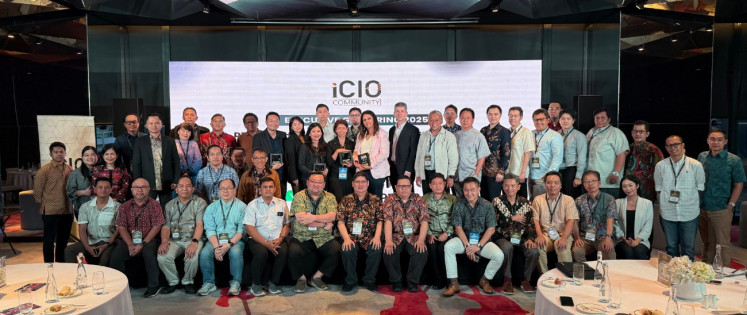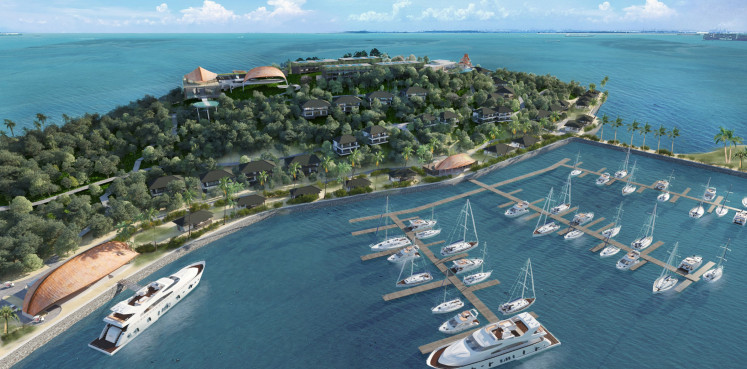Popular Reads
Top Results
Can't find what you're looking for?
View all search resultsPopular Reads
Top Results
Can't find what you're looking for?
View all search resultsMangrove sustainability requires rigorous law enforcement
Change text size
Gift Premium Articles
to Anyone
W
hile rampant mangrove forest conversion remains a challenging issue in Indonesia, one intriguing question is who should manage mangrove forests and what responsibilities this should cover, especially with regard to sustainable rehabilitation.
Muhammad Yusuf, inspector general at the Maritime Affairs and Fisheries Ministry, said holders of the marine space utilization compliance (Konfirmasi Kesesuaian Ruang Laut/KKRL) permit had the right to manage coastal mangrove areas.
“An area with the KKRL permit should be developed in accordance with the permit. However, many mangrove areas have been utilized and developed for venture purposes,” Yusuf said on July 26 while virtually attending a public discussion in Jakarta from Makassar, South Sulawesi.
Themed “Mangrove for the Future”, the event focused on relevant issues in conjunction with this year’s International Day for the Conservation of the Mangrove Ecosystem.
Other featured speakers of the event were: Catur Endah Prasetiani, director of social forestry business development (PUPS) at the Environment and Forestry Ministry; Prasetyo Wiranto, subdirector of Region III spatial utilization control at the Agrarian and Spatial Planning Ministry/National Land Agency (BPN); and Rina Mardiana, chair of agrarian studies at IPB University.
Yusuf revealed how coastline mangrove degradation had prompted restoration efforts to curb coastal erosion, including the development permeable dams equipped with sediment traps.
Land reclamation from sediment traps can be found in Central Java’s Cemara Islands in Jepara regency as well as in Brebes regency, and across Indramayu in West Java and Gresik in East Java. The reclaimed land covers hundreds of hectares, and can be used to expand mangrove forests.
The problem is that land reclamation using sediment traps are owned by individuals from local communities instead of the state, according to Yusuf, and because these individuals hold a land certificate, many of these reclaimed coastal areas have been converted into fish ponds or oil palm plantations.
“That’s why protection and planning should be followed up with strict legal enforcement,” he said, adding that each governmental sector had its own mangrove conservation strategy to ensure the sustainability of mangrove rehabilitation.
Yusuf said there was a need to revise the existing coastal spatial planning and management (RTRW) rules, which were still too broad to provide certainty regarding land management rights, whether in coastal or inland areas.
“I think asset management and access to coastal areas and small islands should prioritize environmental conservation,” he underlined.
The maritime affairs ministry had found numerous cases of mangrove degradation and their violators remained at large without legal repercussions, he continued. “If this continues, then it will severely deteriorate the mangrove ecosystem.”
Citing Article 35 of Law No. 27/2017 that prohibited using methods that risked damaging the mangrove ecosystem, Yusuf said those found guilty of damaging mangroves could face a sentence of a minimum two years and a maximum 10 years in prison, and a fine of a between Rp 2 billion and Rp 10 billion.
Rina Mardiana from IPB University highlighted that the mangrove ecosystem had a variety of functions. Aside from hosting biodiversity, it trapped sediment and formed soil, protected coastlines and controlled coastal abrasion, contributed to tourism and recreational activities, provided livelihoods and produced food, had a high carbon storage capacity and were of cultural significance.
Rina underscored the importance of fostering balance between the conservation and economic functions of the mangrove ecosystem by enhancing collective leadership in mangrove management, with local communities playing a central role, as way to ensure its sustainability.
Indonesia possessed agrarian diversity from Sabang in Aceh to Merauke in Papua, she noted, with each coastal community possessing local wisdoms and knowledge in the conservation and economic functions of mangroves.
As such, each mangrove area needed a localized form of intervention that matched a community’s social capital and economic landscape.
“For example, a certain mangrove area might have high social capital, such as well-maintained local wisdoms and a good ecosystem. This means that area has the potential for environmental management and economic development, which enables collaborative governance involving the private sector to enhance these two functions,” said Rina.
In contrast, if a certain mangrove area had both poor social capital and a poor ecosystem, this was likely a result of economic pressures from mangrove conversion into fish ponds or oil palm plantations.
“This area requires a rehabilitation program and an intensive mangrove awareness campaign,” she said.
According to Rina, mangrove areas can be categorized as state property managed under the Environment and Forestry Ministry, or KKP, communal or customary land, state property managed under the Agrarian and Spatial Planning Ministry/BPN or as private property (company concession or social forest).
Successful collaboration
Rina said the penta-helix framework, which offered collaborative, participatory governance by involving local communities, the central government, local administrations and the private sector, was a community investment. Under the principle of engagement, all stakeholders must be engaged and communicate transparently, including in negating the impacts of conflict (conflict resolution).
Scaling up capacity for doing action as part of a collective governance framework required capacity building and collaborative planning, she said.
“So mangrove planning is part of a joint action that respective stakeholders should take, and there must also be monitoring and evaluation,” said Rina.
In her presentation on “Concept and Practices of Social Forestry in Ensuring Certainty of Right and Access to Mangrove Forest”, Catur Endah from the environment ministry explained how community groups that managed mangrove forests and lived in a forest estate could apply for the right to social forestry access and management. This could be under the village/rural forest, communal forest, people’s forest, customary forest or forestry partnership schemes, with the permit valid for 35 years with an option to extend, pending an evaluation.
(Courtesy of BRGM)The communal forestry program aimed to address economic inequality, she continued, including inequality in land access, capacity and human resources.
Out of a targeted 12.7 million hectares of mangrove areas, 7.08 million ha were currently managed as a communal forest and involved around 166 social forestry groups, said Catur Endah.
“We facilitate the efforts of local communities in managing forests, encouraging them to prepare communal forest management plans that must include space for both utilization and protection,” she said.
“This way, local communities will be aware of the need to protect the forest, environmental services and forest products, including timber and non-timber products.”
One of the success stories was the communal mangrove forest in the Bhakti Alam agritourism destination in Malang, East Java, where the local community had rehabilitated mangroves with the assistance of the Clungup Mangro Conservation nongovernmental organization and turned the coastal area into a popular ecotourism destination.
“This also epitomizes successful collaboration and synergy of different parties,” Catur Endah said, adding that the communal mangrove forest in Bhakti Alam had initially spanned 17 million of 81 million ha, and had expanded to 61.7 million ha today.
To safeguard the function of mangroves, the agrarian planning ministry applied the strict 3R (right, restriction and responsibility) principle to applicants of land management right in a protected area.
Prasetyo from the ministry said applicants of right to mangrove area management should follow the RTRW rules to comply with Government Regulation No. 21/2021 on spatial utilization and control, whether preventive or curative.
“This is our effort to contribute to sustainable mangrove ecosystem preservation and conservation,” he said.
RTRW holders had legal access to utilize a designated mangrove area and ensure this did not disrupt its conservation and sustainability, said Prasetyo, but if they were found to be misusing the land, they would be stripped of the RTRW.
Hartono Prawiraatmaja, head of the Peatland and Mangrove Restoration Agency (BRGM), added that collaboration between stakeholders was key to successful mangrove rehabilitation efforts, from the institutional to the grassroots level. This collaboration must clearly adhere to the existing regulations and encapsulate the shared will and common aims of all stakeholders.
"Therefore, the BRGM, together with the Environment and Forestry Ministry, is currently pushing for the issuance of a government regulation on the protection of mangrove ecosystem management, which we hope will be published this year for implementation starting next year," he said.

